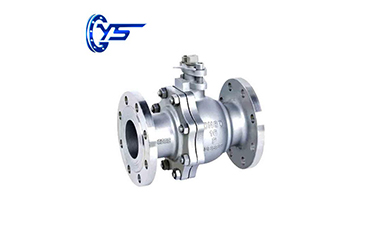The globe valve supplier shares this article for you.
1. There are many types of casting. According to the molding method, ordinary sand casting, and special casting:
① Common sand mold casting, including dry sand mold, wet sand mold, and chemically hardened sand mold.
② Special casting, divided into two types: the special casting of ore and special casting of metal material according to the mold material;
Special casting using metal as the mold material, including pressure casting, metal casting, low-pressure casting, continuous casting, centrifugal casting, etc.;
Special castings using natural mineral sandstone as mold material include solid casting, investment casting, shell casting in foundry workshop, mud casting, negative pressure casting, ceramic casting, etc.
2. Casting is a metal thermal processing technology. Casting production has better comprehensive mechanical properties, wider adaptability of casting production, and low cost of blanks. For parts with more complicated shapes, especially complex internal structures, more It can show the economy of casting production.
3. Casting is the basic process of the modern machinery manufacturing industry. It is to smelt metal into a liquid and pour it into a casting mold. After cooling and solidifying, the casting is taken out and cleaned to obtain a casting with a predetermined size, shape, and mechanical properties (rough or Parts).

Cast Steel Flange Ball Valve
4. The casting process usually includes:
① Prepare the casting mold (the mold used to make the liquid metal into a solid casting, the quality of the casting mold directly affects the quality of the casting), the casting mold can be divided into one-time type, multiple type, and permanent type according to the number of uses. The molds are divided according to materials: metal type, sand type, mud type, ceramic type, graphite type, etc.,
② Melting and pouring of cast metals, cast metals mainly include cast iron, carbon steel, and stainless steel;
③ Processing and acceptance of castings. Casting treatment includes removal of foreign objects and cores on the surface of the casting, treatment of protrusions (shovel grinding burrs, removal of pouring risers and treatment of burrs, etc.), heat treatment, shaping, roughing and anti-rust treatment of castings Wait.
5. The shortcomings of the casting production method, casting will produce noise, harmful gases, and dust, etc. and pollute the environment, and the required materials (such as molding materials, metals, fuel, wood, etc.) and equipment (such as core making machines, metallurgical furnaces, There are many molding machines, sand mixers, shot blasting machines, etc.).
6. Cast steel is divided into 3 types: cast carbon steel, cast low alloy steel, and cast special steel.
① Cast carbon steel. Cast steel with carbon as the main alloy element and a small number of other elements. Casting low carbon steel with carbon content less than 0.2%, casting medium carbon steel with carbon content 0.2% to 0.5%, casting high carbon steel with a carbon content greater than 0.5%. As the carbon content increases, the strength of the cast carbon steel increases, and the hardness increases. Cast carbon steel has high strength, plasticity and toughness, and low cost. It is used in heavy machinery to manufacture parts that bear large loads, such as steel rolling mill frames, hydraulic press bases, etc.; it is used to manufacture heavy stress on railway vehicles The parts that bear the impact such as a bolster, side frame, wheel, and coupler, etc.
② Cast low alloy steel. Cast steel containing manganese, chromium, copper, and other alloy elements. The total amount of alloy elements is generally less than 5%, which has greater impact on toughness and can obtain better mechanical properties through heat treatment. Cast low alloy steel has better performance than carbon steel, which can reduce the quality of parts and increase the service life.
③ Casting special steel. There are many types of alloy cast steel refined to meet special needs, usually containing one or more high-quality alloy elements to obtain certain special properties. For example, high manganese steel containing 11% to 14% manganese can withstand impact wear, and is mostly used in wear-resistant parts of mining machinery and engineering machinery; various stainless steels with chromium or chromium-nickel as the main alloy element are used for corrosion or 650 Parts working under high-temperature conditions above ℃, such as valves, pumps, containers for chemical industry, or steam turbine housings for large-capacity power plants.
Our company provides a cast steel flange ball valve, if you are interested in our products, please feel free to contact us.
Previous: "How" and "Why" of "Y Filter"
Copyright © Hebei Yaosheng IM & EX Trading Co.,Ltd. All Rights Reserved |Sitemap | Technical Support: 
